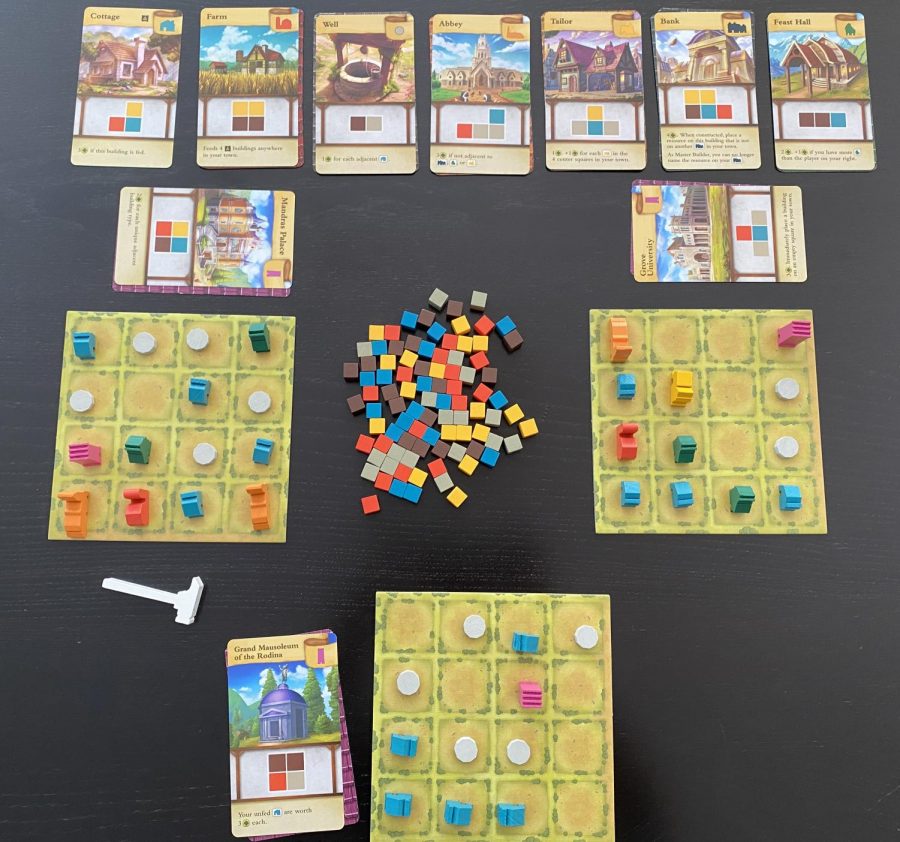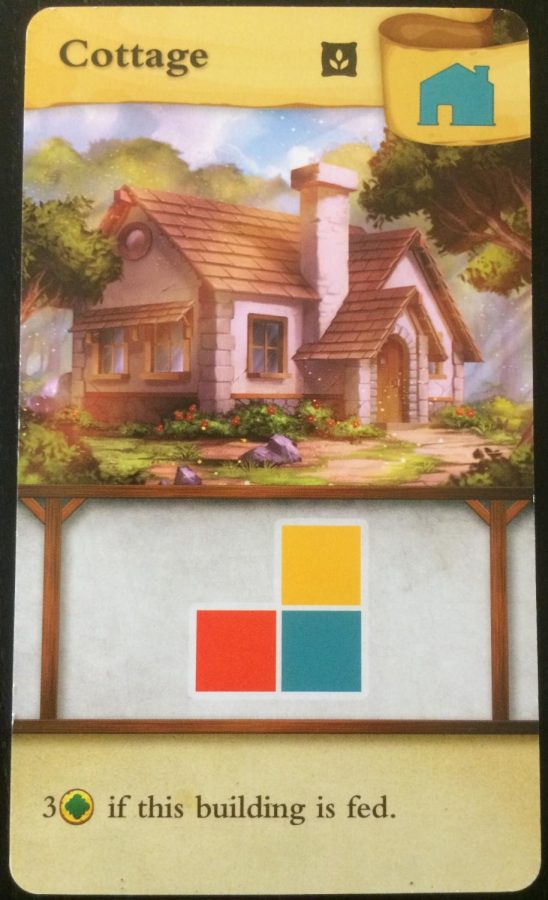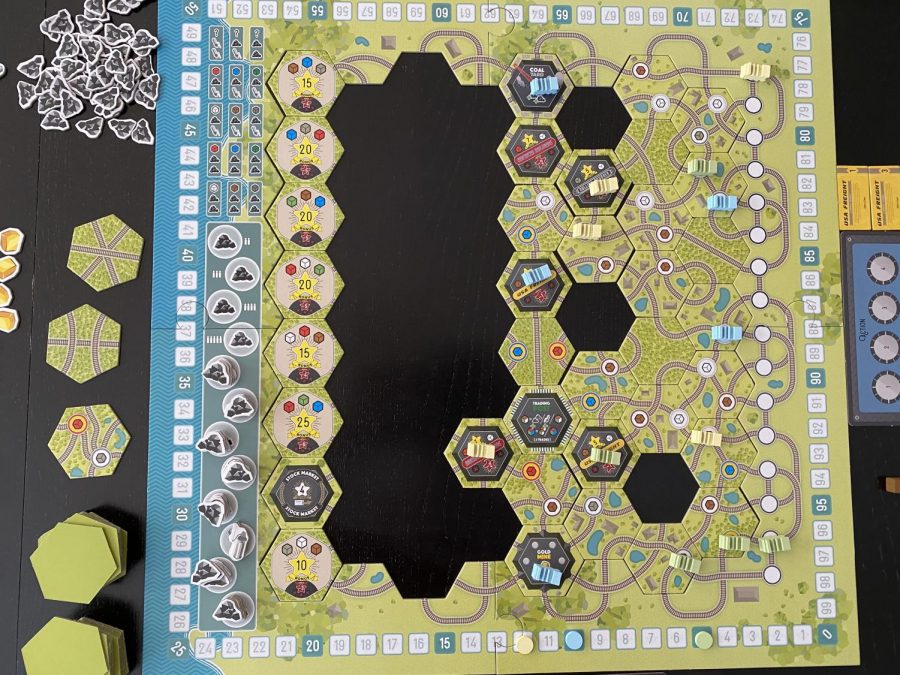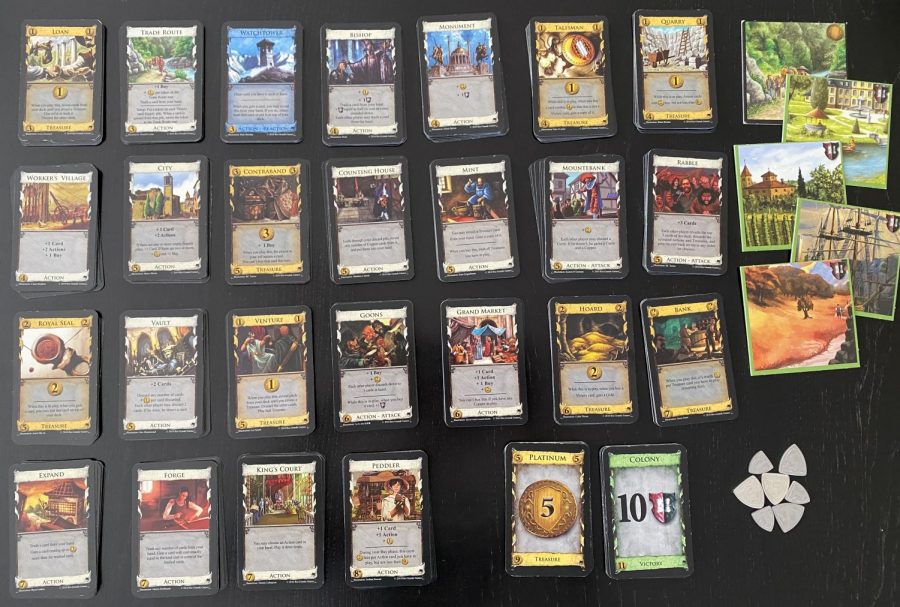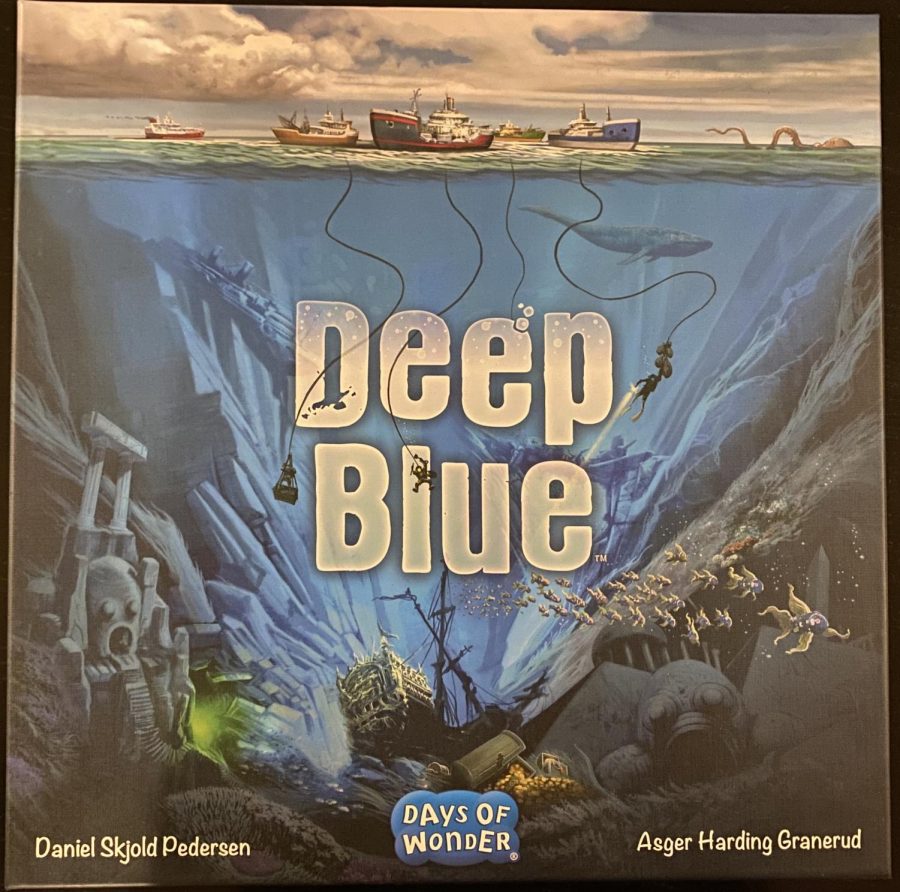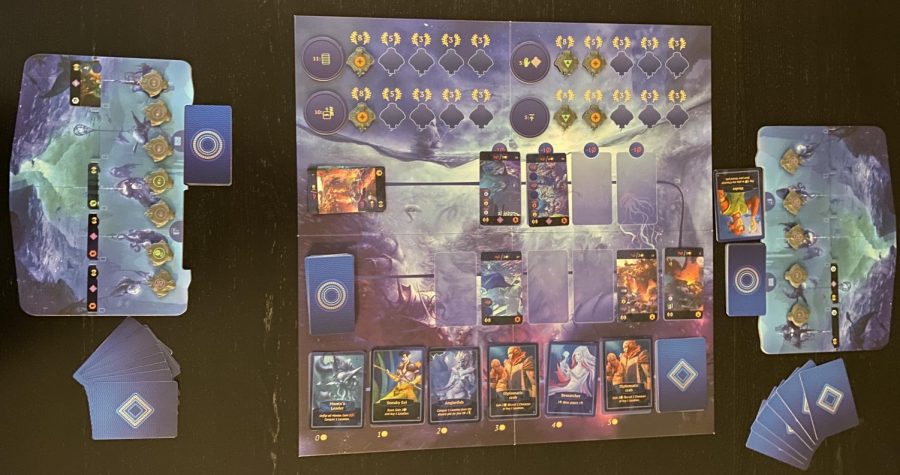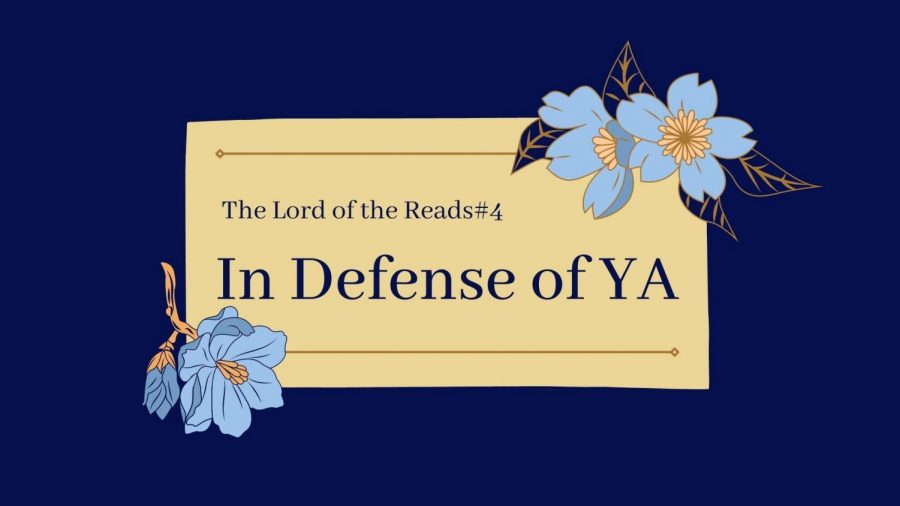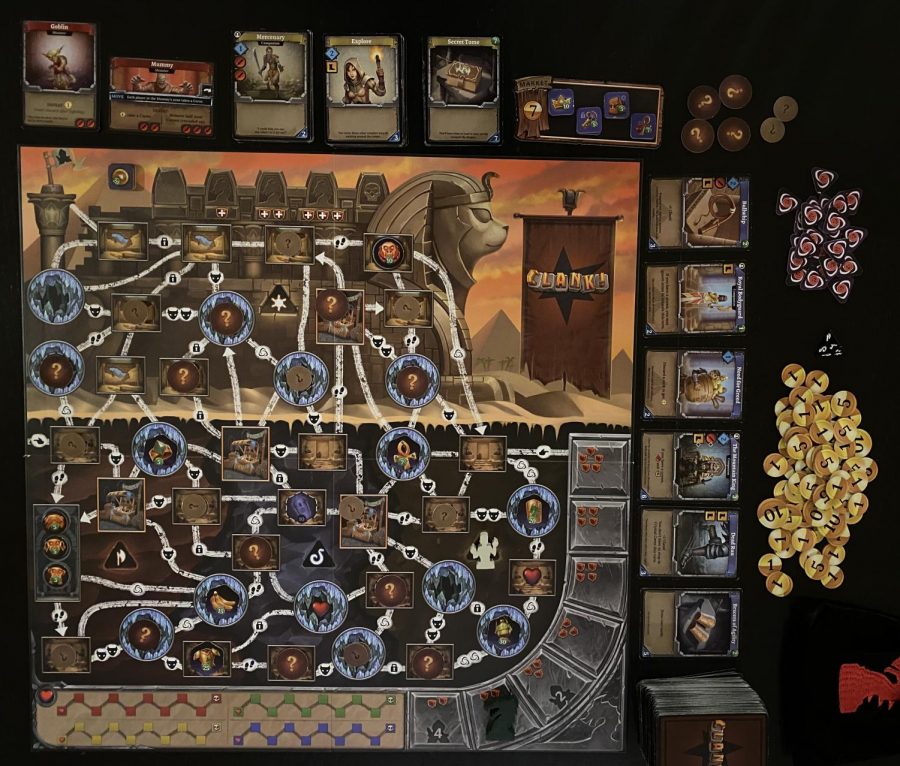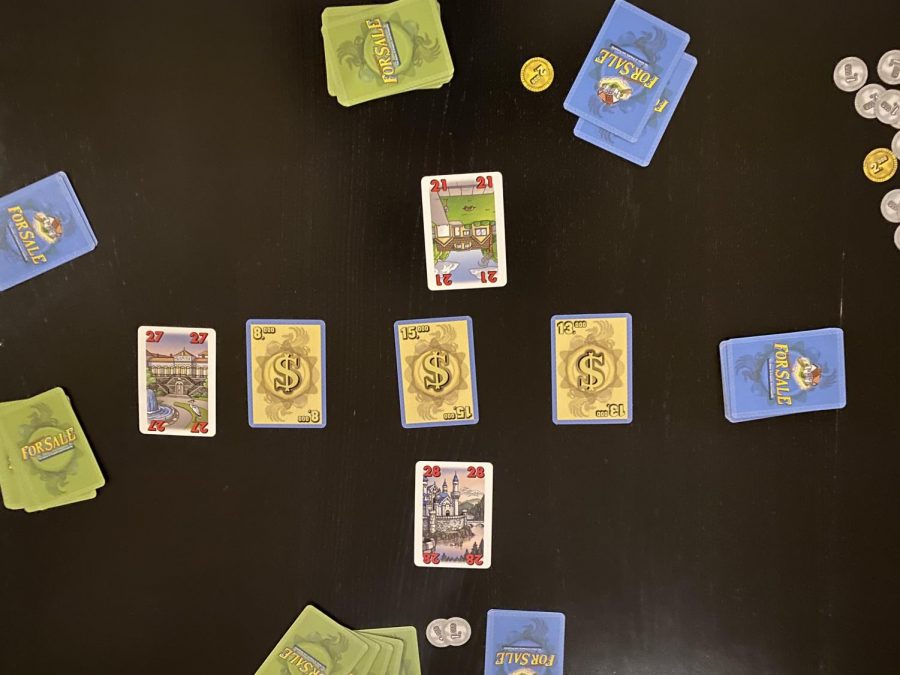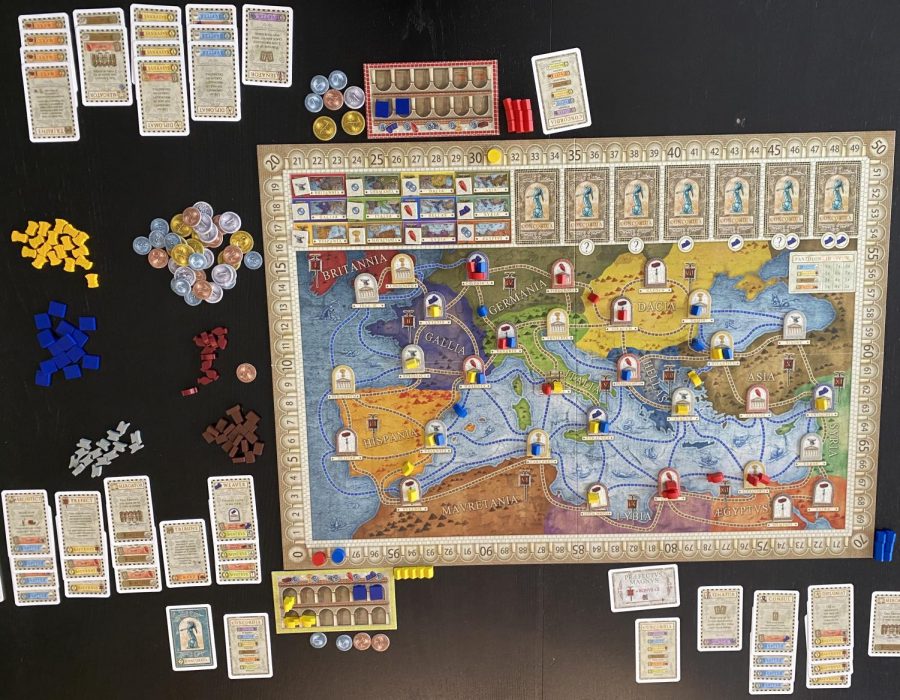Designed by Peter McPherson and published by Alderac Entertainment, Tiny Towns is a city-building game where 1-6 players compete to build the best town. Players take turns being the master builder and choosing which resource everyone gets. However, it is up to the players to figure out how to use each resource to strategically score the most points and reduce the number of empty spaces in their town.
Tiny Towns has two sets of rules for the game and a solo variant. Because this is an easy game to learn, I’ll first explain the main game and explain the other variants before going into my final thoughts.
How to Play
Each player is going to be given a 4×4 grid, which is their town. There are also seven types of buildings that you can place in your town, and each one will have a face up card to explain how to construct this building and how it scores points in this game. Also, there is a pile of resources that players will use to build.
Players take turns being the master builder, but the game is played simultaneously. As the master builder, you get to pick one of the five resources, and everyone takes one resource of that type and places it on an empty space in their town. Next, players are allowed to add buildings to their town if they have resources in the correct configuration. The building cards show the pattern the resource cubes must be in, but the pattern can be rotated and reflected. If you choose to build something, place the building on one of the spaces with this building’s pattern. Then, remove all the resources you used to construct this from your board.
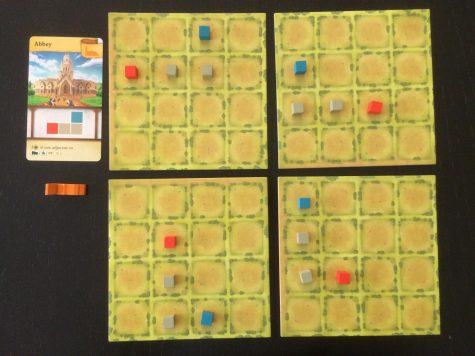
After all players add the resource and build if they want to, the next player becomes the master builder and names a resource. Play continues like this until a player’s town has no empty spaces at the end of a round. When this happens, that player’s town is complete. They no longer take turns as the master builder and can add up their score. The last player remaining will be the sole master builder and can continue to name resources until they finish their town. Then, the game is over.
Players add up the points for all of the different types of buildings in their town. Each resource cube in their town is removed and all empty spaces are worth -1 point. The player with the most points is the winner.
After your first play, you probably will want to introduce monuments, an additional building type, to add an additional layer of complexity. The way monuments work is that each player is dealt two monument cards. Throughout the game, they are allowed to build one of them if they want. Building a monument is just like building another card. Monuments give you a combination of points and special abilities.
Another simple game variation to make the game easier is the cavern rule. It allows players to place the named resource next to their player board instead of in their town. However, you are only allowed to do this twice per game, so you need to use this power wisely.
Town Hall Variant
In the town hall variant, the only rule change regards how the resources are chosen. Players do not take turns as the master builder. Instead, a deck of resource cards is shuffled and the top five cards are removed until the next shuffle. The top card of the deck is revealed and determines which resource all players need to place in their town. On the second turn, the next card from the deck determines which resource players place in their town. On the third turn, each player can place a resource of their choice in their town.
This cycle of two cards from the deck and one resource of your choice continues until everyone completes their town. Whenever the deck of resource cards run out, all 15 cards are shuffled and five cards are discarded just like at the beginning of the game.
Solo Variant
Similar to the town hall variant, the solo variant also uses resource cards. In the solo game, you are attempting to score the highest score possible. All 15 resource cards are in the deck and the top three are placed in a face-up row. On your turn, you choose any of the face-up resources to place in your town. There are also some buildings and monuments that you can’t use because of the way you get resources. Other than that, the rules for the solo game remain unchanged.
Final Thoughts
This game is much harder than it seems. When I was reading the rules, I thought it would be a walk in the park, but it’s a lot more difficult because you have to think about getting the right resources and building everything in the correct order. That’s one of the reasons why I really like this game.
However, you have to play the game with monuments for it to be fun. The monuments are the only item that stop everyone from playing the exact same strategy. They are also powerful enough that I will always want to build one of them.
Some people will find the game too hard, and playing multiple games without improving your score can be demotivating and not enjoyable. But, the variations built into the game keep it interesting. For example, there are four versions of each of the building types (except cottages), which makes the game feel different every time you play.
The only thing that is slightly problematic is that the last player to be the master builder can finish their town however they want because they are the only player who names resources. Unless the last players finish their towns at about the same time, that advantage can be big enough to win the game. On the other hand, you can also make this part of your strategy by getting buildings that require more resources to build them. Since it will take you longer to get your buildings, you will have more flexibility in your town than your opponents.
Most of the issues with the last master builder and competing with other players for resources can be solved in the town hall variant. Besides a little bit of luck with five cards removed from the deck, you can usually count on an even number of each resource called.
The solo variation is fine too. It feels more like solving a puzzle than playing Tiny Towns because you are competing against yourself to get the highest score. You won’t like this if you are looking for a solo game where you try to beat a simulated opponent, but you will like this solo game if you like puzzles. The resource selection mechanism in this variant is solid although the even number of each resource allows you to potentially build up an engine and remove all tension from the game. I also found this variant to be easier than the regular rules, but it might just be the card combinations that I happened to have played with.
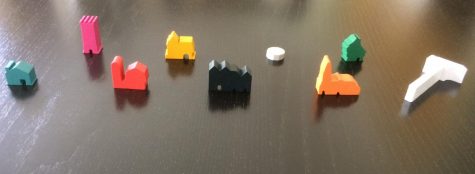
Overall, Tiny Towns has a lot of different variations, and something will appeal to you assuming you are looking for a puzzle-like game. The game does not take more than 45 minutes and due to simultaneous play, the game length does not increase much with more players. I haven’t played with more than three players before, but I assume that the game is harder with more players because you get to pick the resource less often. More players also means that it is possible for some player’s resource choices to help another player win, so the town hall variant might work better at higher player counts.
Tiny Towns is available online and in game stores for about $30-45. The challenging puzzle aspect to the game, master builder mechanism, rules flexibility, replayability, and excellent components allows me to give this game an 8.5 out of 10.

